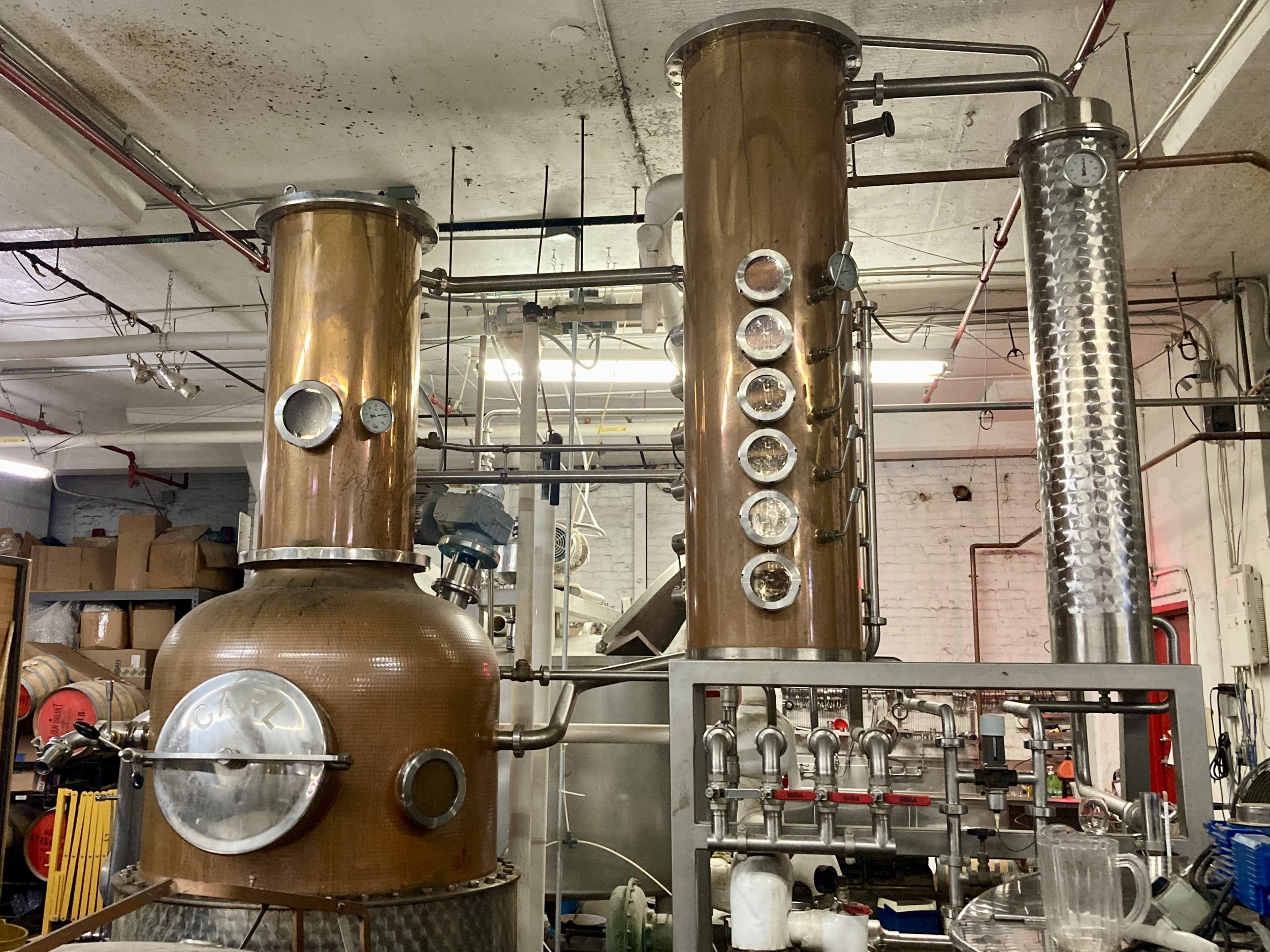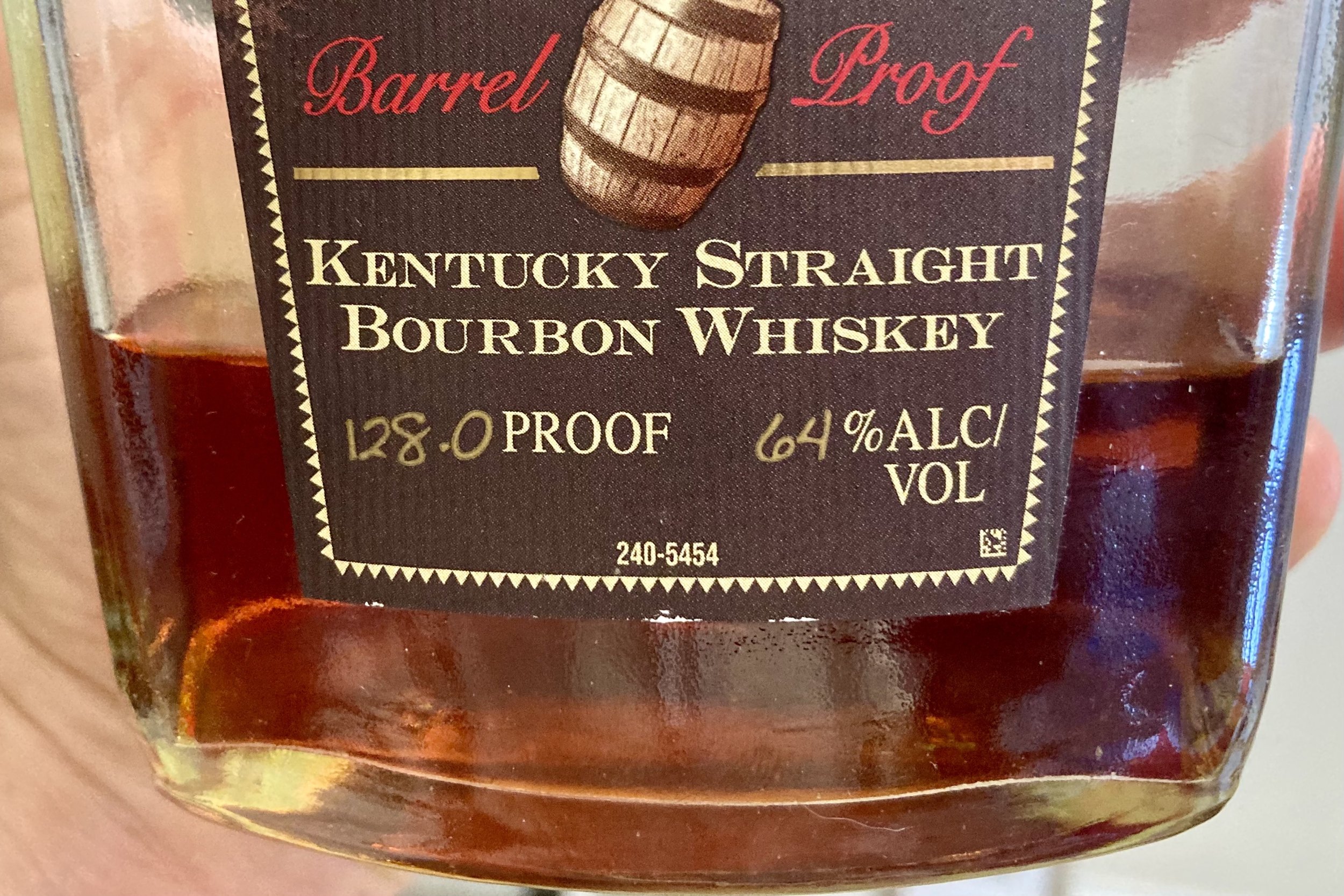Touring Stranahan’s Colorado Whiskey
A wonderful single malt distillery in Denver using local barley.
Jerry and I took an impromptu trip and our first stop was Denver. We only had time to visit one distillery while we were there. There are so many craft distilleries to choose from. Leopold Bros is one of my favorites and Montanya Distillers has been on my bucket list for a while. Both have a huge focus on sustainability, which makes me love them even more. But I chose a distillery that produces exclusively single malts, sourcing 90% of the barley that they use from local farms and paving the way for the American single malt category. They were founded in 2004 making them the first distillery to open in Colorado after prohibition. You already know who I’m talking about… we visited Stranahan’s Colorado Whiskey! And we were lucky enough to have our friends Jared and Delia join us!
As soon as you pull into the parking lot, you can smell the malted barley being pumped from the silos outside into the warehouse. For all of their single malts, they use the same mash bill containing mainly a light roasted malt with touches of darker roasted malts to bring forward hints of chocolate, caramel and coffee notes. Unlike beer, it is very rare for single malt mash bills to include dark-roasted malts. However, George Stranahan (cofounder of Stranahan’s, obviously) comes from a beer brewing background, and the beer he produced at his brewery, Flying Dog, was what was pumped into the original distillery to create the base spirit.
Once we walked into the distillery, that delicious biscuity scent transformed into something more like rich porridge and freshly fermented sourdough starter. We were handed our first whiskey, Blue Peak. This single malt is aged for four years in new, char #3 American oak barrels and then finished in a solera process. This process is traditional in sherry production, where younger sherry is blended into older sherry. The sherry casks are organized in tiers with the youngest on the top and the oldest on the bottom. As a portion of the bottom casks is bottled, they’re topped up with the sherry from the casks on top of them, and then those casks are topped up with the sherry from the casks above them, and so on. The process used at Stranahan’s is slightly different. Instead of having tiers of casks, they blend in a foeder, or very very large barrel. About half of the foeder is bottled at a time and then it is topped up with four-year-old single malt. Blue Peak was light with caramel and citrus notes.
We enjoyed our first pour while viewing the mash tun and strolling passed the fermenters. They have so many huge fermenters! And just beyond the fermenters is where they have their hybrid pot stills. There are three larger low wines/wash stills for the initial distillations and two smaller high wines/spirit stills. The distiller was there running a distillation and tasting the spirit as it was coming off the still. We were able to smell a jar of white spirit and to me, it smelled of noodles, which is typically a note I get towards the tails during grain-based distillations! They take their hearts cut at around 70% ABV, which allows for some character from the grain and fermentation to remain in the final spirit.
We then walked through the warehouse lined with barrels that were aging their single malts. They have two additional warehouses nearby solely for maturation. Stranahan’s uses new char #3 American oak barrels from Independent Stave Company, which is a huge cooperage based in Missouri that supplies barrels to a lot of American distilleries. As we heard about the maturation process, we tasted Stranahan’s Original. This single malt is aged for 4-7 years and bottled at 47% ABV. There was almost an herbal quality to this presenting as lemon-forward thyme.
Stranahan’s also has additional used-casks that they use for finishing various single malts. The third single malt we tasted was Black Diamond, which is finished in Bushmills Irish Single Malt casks. This had a lot more fruitiness as compared to the other two single malts. They also produce an oloroso sherry cask-finished whiskey, but that was not a part of our tasting.
Now, speaking of single malts and barrels, single malts produced all over the world are able to use new or used casks for aging. That is, except for the US. Malt whiskey in the US must be made from at least 51% malted barley and must be aged in new charred oak barrels (among additional regulations that I won't discuss now). There currently is no legal definition for “American Single Malt”. However, that is changing thanks to the distillers who have come together to create the American Single Malt Whiskey Commission (ASMWC) which sets out to establish, promote and protect the American single malt category. Because of all their work, the Alcohol and Tobacco Tax and Trade Bureau (TTB) proposed a Standard of Identity for American single malt in July of 2022. These regulations would require American single malt to be produced entirely by one distillery in the US from 100% malted barley and it would allow for aging using any type of oak casks. That means distilleries can use used-casks to age their single malts! I find this really exciting for the future of American whiskey and hope that distillers embrace used casks.
Anyways, let's get back to Stanahan’s tour and tasting. We finished sipping on the Black Diamond single malt while viewing the impressive bottling line set up for bottling Tincup Whiskey. To be honest, I knew that Tincup was sourced whiskey, but I didn’t realize that Tincup was bottled at Stranahan’s. It is actually a blend of mostly high-rye bourbon from MGP in Indiana with a touch of Stranahan’s single malt. Both Stranahan’s and Tincup are owned by the same parent company, Proximo Spirits, which also owns brands such as Bushmills, Jose Cuervo, Kraken, and Hangar 1. Unlike Tincup, the bottling of Stranahan’s whiskey is more hands-on and anyone can sign up for their bottling-line lottery. We heard that volunteers get a few pours of single malt and get to take home a bottle.
We finished the tour in a little bar off the gift shop, where we got our final pour of a distillery exclusive whiskey. This single malt was finished in NY Rye barrels from Black Button Distilling. The influence of the rye barrel was subtle, but did bring forth some additional notes of baking spices and dried herbs. All four of the whiskeys we tried were tasty, but I wish I had more descriptive tasting notes to give you on each of them. I’m not great at tasting while listening and observing on a distillery tour. And there was a lot to see and hear at Stranahan's.


















